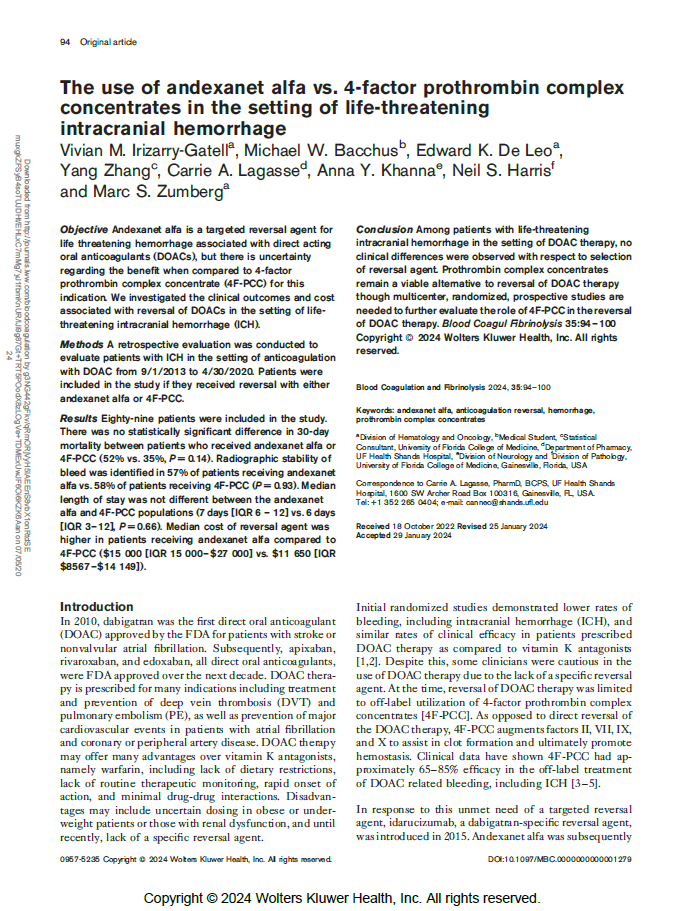The use of andexanet alfa vs. 4-factor prothrombin complex concentrates in the setting of life-threatening intracranial hemorrhage
April 2024
Abstract
Objective
Andexanet alfa is a targeted reversal agent for life threatening hemorrhage associated with direct acting oral anticoagulants (DOACs), but there is uncertainty regarding the benefit when compared to 4-factor prothrombin complex concentrate (4F-PCC) for this indication. We investigated the clinical outcomes and cost associated with reversal of DOACs in the setting of life-threatening intracranial hemorrhage (ICH).
Methods
A retrospective evaluation was conducted to evaluate patients with ICH in the setting of anticoagulation with DOAC from 9/1/2013 to 4/30/2020. Patients were included in the study if they received reversal with either andexanet alfa or 4F-PCC.
Results
Eighty-nine patients were included in the study. There was no statistically significant difference in 30-day mortality between patients who received andexanet alfa or 4F-PCC (52% vs. 35%, P = 0.14). Radiographic stability of bleed was identified in 57% of patients receiving andexanet alfa vs. 58% of patients receiving 4F-PCC (P = 0.93). Median length of stay was not different between the andexanet alfa and 4F-PCC populations (7 days [IQR 6 – 12] vs. 6 days [IQR 3–12], P = 0.66). Median cost of reversal agent was higher in patients receiving andexanet alfa compared to 4F-PCC ($15 000 [IQR 15 000–$27 000] vs. $11 650 [IQR $8567–$14 149]).
Conclusion
Among patients with life-threatening intracranial hemorrhage in the setting of DOAC therapy, no clinical differences were observed with respect to selection of reversal agent. Prothrombin complex concentrates remain a viable alternative to reversal of DOAC therapy though multicenter, randomized, prospective studies are needed to further evaluate the role of 4F-PCC in the reversal of DOAC therapy.

